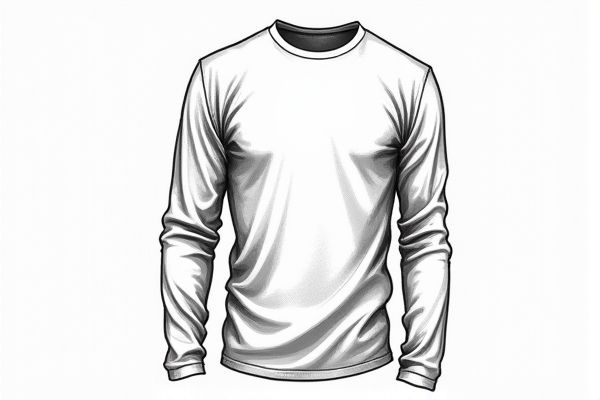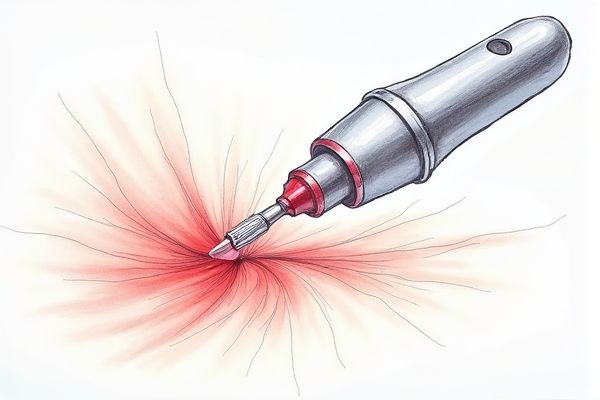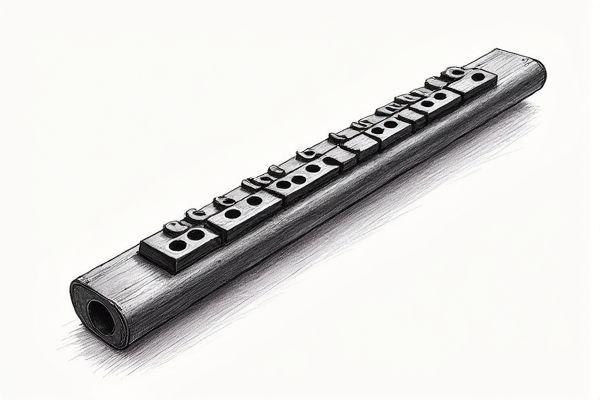In today's competitive market, brands are constantly seeking innovative ways to enhance their merchandise offerings and connect with consumers on a deeper level. From cutting-edge fashion labels to eco-friendly lifestyle companies, the diversity in the world of merchandise is vast and exciting. We've curated a list of some of the best brands that not only provide high-quality products but also prioritize sustainability, creativity, and consumer engagement. Whether you're a trendsetter, an eco-conscious shopper, or simply looking for the best in retail, discover the top brands that are setting the standard in the industry below.

Illustration of merchandise
Best brands of merchandise in 2025
Nike
Nike is a leading producer of merchandise, dominating the global sportswear segment with a 43.7% market share as of 2022. In fiscal year 2023, Nike exceeded $50 billion in revenue, with $33.14 billion coming from footwear alone, which accounts for about 62.5% of its global revenues. The company produces over 800 million pairs of shoes annually, with 50% manufactured in Vietnam and 27% in Indonesia. Nike's direct-to-consumer sales reached $21.31 billion in fiscal 2023, and the brand holds a significant 38.5% market share in the sneaker segment. Its strong consumer momentum and robust product innovation pipeline continue to drive its success. For more detailed statistical insights on Nike's impact, visit their Nike shoes statistics page.
Adidas
Adidas is a leading producer of athletic merchandise, renowned for its high-quality and performance-driven products. In 2022, the company generated $23.7 billion in revenue, with footwear accounting for 55% of its net sales, followed by apparel at 39%, and accessories and gear at 7%. Adidas holds a significant market share, including 15.4% in the global athletic footwear market and 14.7% in the sneaker market as of 2022. The company produced 419 million pairs of shoes in 2022, a 23% increase from 2021, and employs approximately 59,000 people globally. Adidas maintains a strong presence in key markets such as North America, Greater China, and the EMEA region. For a detailed breakdown of Adidas' financial and production statistics, visit Adidas' statistics page.
Supreme
Supreme, founded by James Jebbia in 1994, is a leading streetwear brand known for its limited and highly sought-after merchandise. The brand reported revenue of $523.1 million in 2023, down from $561.5 million in 2022, but still maintaining a strong presence in the market. Supreme's strategy of releasing limited collections every Thursday has created a scarcity-driven demand, often resulting in merchandise selling out quickly and sometimes reselling at substantial premiums, such as the $90,000 auction price for a Supreme Box Logo Hoodie in 2017. The brand's collaborations, like the 2021 partnership with Tiffany & Co., further enhance its appeal. With 15 global stores and a strong online presence, Supreme continues to be a top seller in the streetwear market.
Zara
Zara stands as a pinnacle in the fast fashion industry, renowned for its agile and responsive supply chain. The brand produces over 450 million items and launches around 12,000 new designs annually, with stores receiving new products twice a week and items typically reaching stores within 10 to 15 days after design. Zara achieves an impressive 85% full-price sales rate, significantly higher than the industry average of 60%, and maintains only 10% unsold inventory compared to the industry's 17-20%. The company's in-house manufacturing, particularly in Spain, allows for flexibility and quick adjustments, with 50% of items manufactured in Spain and 26% in the rest of Europe. This approach enables Zara to keep up with rapidly changing fashion trends and offer high-quality, affordable clothing.
H&M
H&M is a leading global fashion brand, known for its extensive range of merchandise produced in over 1,027 tier 1 factories across Europe, Asia, and North America, with China and Bangladesh being the largest production markets. The company has been publishing its Corporate Social Responsibility Report since 2002 and has made significant strides in sustainability, including the launch of its first collection made entirely of sustainable materials in 2010. H&M operates in more than 75 markets worldwide, with almost 60 of these markets offering online sales. The brand has reduced its SKU count by 40% and eliminated most menswear products to tailor store assortments better, using big data and AI to analyze purchasing patterns. As of 2023, H&M works with over 574 commercial product suppliers and employs around 1.4 million people in its supplier factories. You can learn more about their history on their website.
Uniqlo
Uniqlo has established itself as a leading producer of high-quality, affordable merchandise, with over 2,434 stores globally as of 2023 and a remarkable 14.8% profit margin. Founded in 1984, Uniqlo has grown exponentially, achieving a 2104.29% increase in international operating revenue from $70 million in 2012 to $1.543 billion in 2023. The brand is known for its innovative fabrics such as HeatTech, AIRism, and LifeWear, with HeatTech sales exceeding 1.5 billion units by 2022. Uniqlo's efficient supply chain and robust production process, including rigorous quality inspections, ensure reliable products. The company aims to reduce Scope 3 GHG emissions by 20% by 2030, reflecting its commitment to sustainability.
Disney
The Walt Disney Company stands as a paramount leader in the merchandise industry, generating significant revenue through its vast array of intellectual properties, including Disney, Pixar, Marvel, and Star Wars. In 2023, Disney reported $5.3 billion in revenue from its consumer products segment, which accounted for 23% of its operating income, highlighting the segment's high operating margin of 53%. This revenue stream has proven resilient, maintaining figures between $4.5 and $5.3 billion over the last five years, even during the COVID-19 pandemic. Disney's merchandise business is bolstered by lucrative partnerships, such as its relationship with Lego, and the popularity of items like the Duffy Bear, which nets over $500 million annually. The company's global retail sales of licensed merchandise reached $56.2 billion in 2021, solidifying its position as the top licensor worldwide. For more detailed insights, visit the statistics on Disney's consumer products business.
Vans
Vans is a leading brand in the footwear and apparel industry, renowned for its high-quality merchandise. In the 2023 fiscal year, Vans recorded a global revenue of $3.7 billion, with the Americas generating $2.4 billion of this total. The brand holds a significant market share, including a 6.1% share of the US footwear market in 2021 and a 10.1% global market share in the skateboarding shoes segment. Vans produces over 105 million pairs of shoes annually, with 98% of these being manufactured abroad, primarily in China. The brand's popularity is particularly strong among younger generations, with 90% of Gen Z consumers recognizing the brand.
Gucci
Gucci is one of the leading luxury brands, renowned for its high-quality merchandise, particularly in leather goods, which account for 52% of its revenue. In 2022, Gucci generated EUR10.49 billion in revenue, approximately USD $11.46 billion, with a significant portion coming from its online store, which saw eCommerce net sales of $1.63 billion. The brand operates 528 stores globally, with a strong presence in the Asia-Pacific region, where it has 183 stores. Gucci's products, including shoes and ready-to-wear clothing, contribute substantially to its revenue, with shoes making up 21% and ready-to-wear 15%. Despite recent challenges, Gucci remains the fourth most valuable luxury brand worldwide, valued at about $23.8 billion as of 2024. For more details, visit Gucci's official website.
Levi's
Levi Strauss & Co. is a leading producer of merchandise, particularly renowned for its Levi's brand, which accounts for the vast majority of the company's revenues. In 2023, Levi's posted a net profit of almost $250 million and achieved record sales of $6.18 billion, a marginal rise from the previous year. The company's direct-to-consumer segment has seen significant growth, with a 10% increase in the latest quarter, and globally, DTC sales jumped 18% during the 2022 fiscal year. Levi's holds a market share of around 4.10% in the apparel industry as of Q3 2024. The brand is also committed to sustainability, with 90% of its facility energy being renewable in 2022 and a target of 100% renewable energy by 2025.
















Leave a Reply
Your email address will not be published.